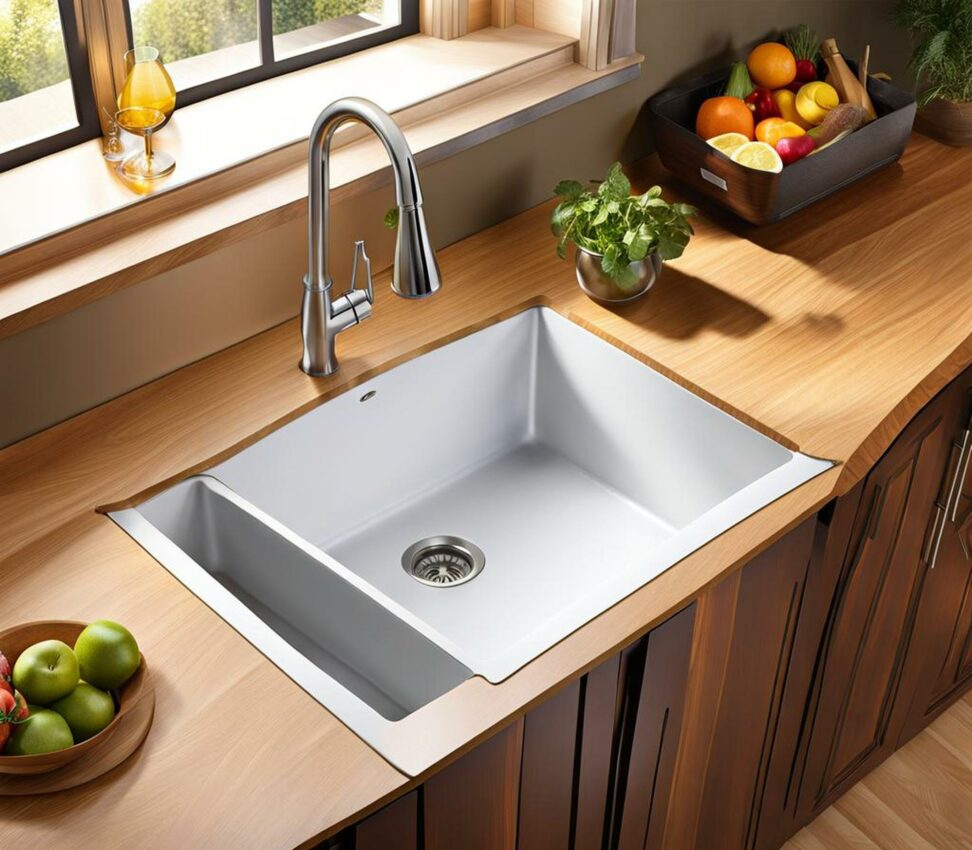Cut it Out! Must-Know Kitchen Sink Cutout Sizes Revealed
Installing a new kitchen sink or replacing an old one can be a frustrating experience if the sink cutout isn't sized properly. An improper cutout that's too small or too large can lead to leaks, stability issues, and headaches getting the sink positioned correctly. Proper measurement is crucial for a seamless sink installation.
You'll also learn professional tips for measuring your existing cutout or planning a new one. With the right techniques and knowledge, you can get your kitchen sink cutout sized just right the first time.

Common Kitchen Sink Sizes
Kitchen sinks come in a variety of shapes and configurations, but most residential sinks conform to a few standard width and length dimensions:
- Width - Most common sizes are 22, 30, and 33 inches wide.
- Length - Standard lengths are usually 30 or 33 inches.
- Depth - Sink basins are typically 8 to 10 inches deep.
Undermount sinks require a very precise cutout size since the sink rim mounts below the countertop. Always check the exact dimensions for an undermount sink prior to cutting.
Measuring an Existing Sink Cutout
When replacing an old or damaged sink, the first step is to remove the existing sink completely from the countertop or sink base cabinet.
Once the old sink is taken out, you can measure the length, width, and depth of the cutout hole itself. Use a tape measure to get precise measurements in inches. Measure the cutout opening multiple times to ensure accuracy.
Keep in mind that older sinks may have smaller dimensions than modern sinks. Make sure to account for any difference in size between the old and new sink.
Allow Proper Clearance
When sizing the cutout, make sure to allow adequate room for positioning and securing the sink correctly.
As a general rule of thumb, the cutout should be 1 to 2 inches larger than the overall outer dimensions of the sink itself on all sides. This provides clearance for the faucet, water lines, sink rim, and clips or brackets.
For undermount sinks, the cutout width and length should match the sink's dimensions exactly since the rim sits below the counter.
Precut vs. Custom Sink Cutouts
Kitchen sinks designed for cabinet installation often come packaged with a precut countertop or sink base with a standardized cutout size.
While precut sink bases make installation easier, they offer less flexibility if your cabinet layout requires a custom-sized cutout.
For custom countertops and non-standard cabinet configurations, taking measurements and cutting a custom sink opening is required.
Cutout Measurement Best Practices
To measure correctly for a made-to-fit sink cutout:
- Use an accurate tape measure and measure in inches.
- Measure multiple times to verify dimensions.
- Account for any special sizing needs.
- Mark the cut lines clearly before cutting.
- Allow some extra room if the opening seems too small.
Checking dimensions with the actual sink prior to cutting is ideal to ensure a perfect fit.
Common Cutout Size Mistakes
Many kitchen sink installation troubles stem from improper sink cutout sizing. Some typical errors include:
- Assuming an old cutout size will fit the new sink.
- Not accounting for the extra room needed beyond sink dimensions.
- Rushing through cutout measuring and cutting.
- Making incorrect assumptions about standard sizes.
Taking time to measure carefully and plan sink openings correctly prevents headaches down the road.
Avoiding Cutout Problems
Follow these tips for a smooth cutout sizing process:
- Read sink dimensions carefully before purchasing.
- Measure the existing cutout or planned opening multiple times.
- Verify all measurements prior to cutting.
- Take time to cut slowly and precisely.
Having another person double check measurements is also a good idea for accuracy.
A properly sized sink cutout is the first step toward hassle-free sink installation. While standard sizes may work in some cases, accurately measuring and cutting a custom opening tailored to your specific sink provides the best results.
With the right techniques and dimensions, you can feel confident your new kitchen sink will drop right into place and look beautiful in your space. Just remember to measure twice and cut once!